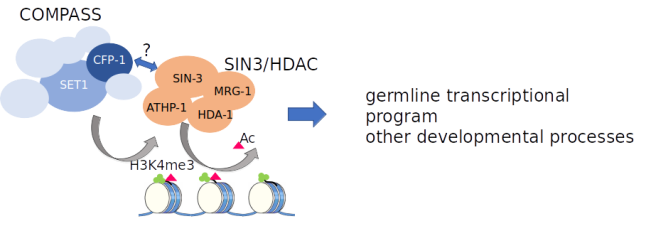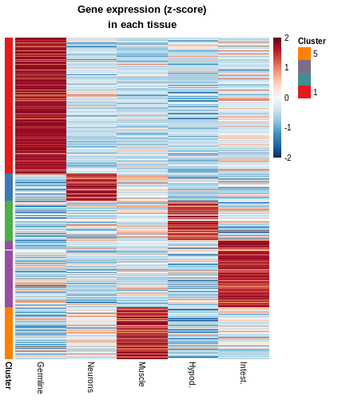Chromatin regulatory complexes in germline maintenance and metabolism
Using a proteomics approach, we have identified all counterparts of the highly conserved SET1/COMPASS complex. In addition, we identified an unexpected interaction between CFP-1, the chromatin-targeting subunit of COMPASS, and components of the SIN3 histone deacetylase (HDAC) complex (Figure 1).
Figure 1

Across species, the SIN3/HDAC coregulatory complex plays a role in essential processes such as cell proliferation, energy metabolism, development, and cellular senescence. Additional proteomics studies have allowed us to identify at least two distinct SIN3/HDAC complexes in C. elegans embryos, whose activities we are now studying.
We have found that inactivation of SIN3 results in reduced germ cell proliferation and sterility, as does inactivation of other complex subunits. We are using genetics, microscopy techniques and genome-wide approaches including ChIP-seq and RNA-seq to study how these different SIN3 complex components contribute to germline function. Our results suggest that SIN3 can activate or repress gene expression depending on the chromatin context and interaction with other histone modifications. The C. elegans germline therefore provides an ideal system to study the different activities of this complex in a single tissue (Figure 2).
Figure 2


We are also exploring how SIN3 complex activity influence metabolic processes and coordinates nucler-mitochondrial communication and homeostasis, using cellular and metabolomic approaches.
